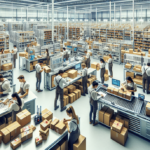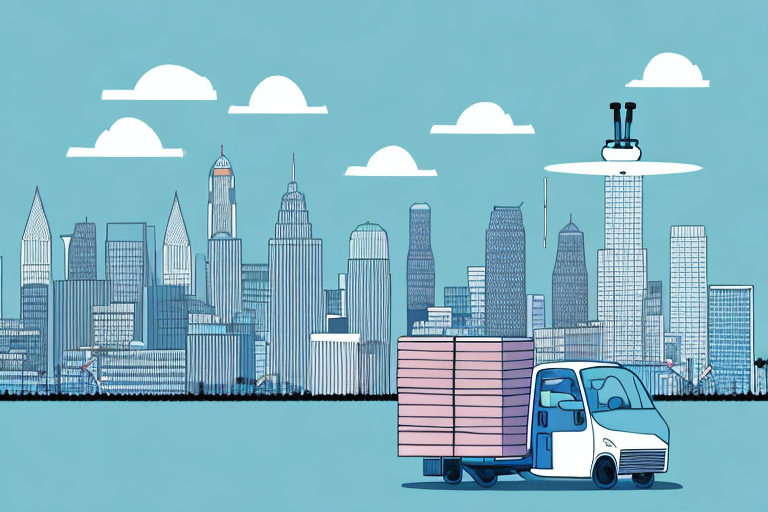The Evolution of Amazon's Shipping Methods
Since its inception in 1994, Amazon has dramatically transformed its shipping strategy to meet the growing demands of the global e-commerce market. Initially, Amazon depended entirely on third-party carriers like the United States Postal Service (USPS) and UPS to handle its shipments. This reliance gradually shifted as Amazon began investing in its own logistics infrastructure.
In 2005, Amazon launched its first fulfillment centers, marking the beginning of its in-house logistics network. This expansion allowed Amazon to gain greater control over its supply chain, reduce delivery times, and improve customer satisfaction. The introduction of Amazon Prime in 2005 was a pivotal moment, offering members free two-day shipping and setting new standards for delivery speed in the industry.
Over the years, Amazon has continued to innovate by integrating advanced technologies such as drones and autonomous delivery vehicles into its shipping processes. In 2016, the company successfully completed its first drone delivery, showcasing its commitment to pioneering faster and more efficient delivery methods. Today, Amazon operates a vast network that includes fulfillment centers, a fleet of delivery vehicles, and its own airline, Amazon Air.
Amazon's Shipping Options for Customers
Amazon provides a variety of shipping options tailored to meet different customer needs and preferences. These options include:
- Standard Shipping: Typically takes 3-5 business days.
- Two-Day Shipping: Available for Amazon Prime members, delivering within two days.
- One-Day Shipping: Guarantees delivery within 24 hours for Prime members.
- Same-Day Delivery: Offered in select metropolitan areas, delivering orders the same day they are placed.
- Amazon Prime Now: Provides ultra-fast delivery for groceries and essentials in certain cities.
Additionally, Amazon offers free shipping on eligible orders, which can be a cost-effective option for customers willing to wait a bit longer for their deliveries. Prime members benefit from even more shipping perks, including free two-day shipping on eligible items and access to exclusive services like Amazon Prime Video and Amazon Music.
Customers can view the estimated delivery times for each shipping option during the checkout process, allowing them to choose the service that best fits their needs. For more detailed information, you can visit Amazon's official Shipping & Delivery Help Page.
Choosing Shipping Partners: How Amazon Selects Its Carriers
Amazon's choice of shipping partners is influenced by several critical factors to ensure efficient and reliable delivery services:
- Delivery Speed: Partners must meet the stringent delivery timelines that Amazon promises its customers.
- Reliability: High on-time delivery rates are essential to maintain Amazon's reputation for dependable service.
- Network Coverage: Extensive and secure networks are necessary to handle both domestic and international shipments.
- Sustainability: Amazon is committed to reducing its carbon footprint, favoring partners that use electric vehicles and alternative fuels.
- Scalability: The ability to handle peak seasons, such as the holiday period, without compromising service quality.
By carefully selecting its shipping partners based on these criteria, Amazon ensures that its logistics network remains robust and capable of meeting the evolving demands of the e-commerce landscape.
FedEx and Amazon: Pros, Cons, and Alternatives
FedEx is one of the primary carriers Amazon employs for delivering packages. Here are some of the advantages and disadvantages of using FedEx for Amazon shipping:
Pros of Using FedEx
- Reliability: FedEx is renowned for its consistent and secure delivery services.
- Global Reach: With a vast international network, FedEx can handle cross-border shipments efficiently.
- Advanced Tracking: Comprehensive tracking systems allow customers to monitor their packages in real-time.
Cons of Using FedEx
- Higher Costs: FedEx services can be more expensive compared to other carriers, potentially increasing the overall cost of orders.
- Limited Carrier Selection: Customers may not always have the option to choose FedEx for their shipments.
- Peak Season Delays: During high-demand periods, FedEx may experience delays that affect delivery times.
Alternatives to FedEx
Amazon collaborates with several other carriers to diversify its shipping options:
- UPS: Offers a wide range of services, including ground, air, and international shipping.
- USPS: Provides cost-effective options for smaller packages and flat-rate shipping.
- DHL: Specializes in international logistics and express mail services.
- OnTrac: Focuses on regional deliveries in the Western United States.
- LaserShip: Provides last-mile delivery services primarily along the East Coast.
Each carrier brings unique strengths to Amazon's logistics network, allowing the company to offer a variety of shipping options to its diverse customer base.
Impact of COVID-19 on Amazon's Shipping Operations
The COVID-19 pandemic significantly impacted Amazon's shipping operations, leading to unprecedented challenges and adaptations:
- Increased Demand: With more people shopping online, Amazon experienced a surge in orders, particularly for essential goods.
- Operational Challenges: The pandemic affected the workforce, with some employees facing illness or quarantine, impacting productivity.
- Safety Measures: Amazon implemented stringent safety protocols, including social distancing, regular sanitation, and provision of personal protective equipment (PPE) to ensure the safety of its employees.
- Supply Chain Disruptions: Global supply chain interruptions led to delays in inventory replenishment and shipping times.
Despite these challenges, Amazon took swift action to maintain its delivery services. Investments in automation, hiring additional staff, and expanding its logistics network helped mitigate some of the pandemic's adverse effects. For more insights, refer to the CDC's guidelines on business responses to COVID-19.
Customer Experiences with Amazon's FedEx Shipping
Customer feedback on Amazon's shipping via FedEx is mixed, reflecting both positive and negative experiences:
Positive Experiences
- Timely Deliveries: Many customers praise FedEx for delivering packages on or before the estimated delivery dates.
- Package Integrity: Reliable handling ensures that items arrive in good condition.
- Effective Tracking: Comprehensive tracking information provides transparency and reassurance.
Negative Experiences
- Delivery Delays: Some customers report delays, especially during peak shopping seasons.
- Lost or Misplaced Packages: Instances of packages being marked as delivered but not received have been reported.
- Higher Shipping Costs: The use of FedEx can sometimes lead to higher shipping fees for customers.
Amazon strives to address these issues by working closely with FedEx to resolve delivery problems promptly. Customers experiencing issues can contact Amazon's customer service for assistance and resolution.
The Future of Amazon's Shipping Strategy
Looking ahead, Amazon continues to innovate and expand its shipping capabilities to stay ahead in the competitive e-commerce landscape:
Investment in Autonomous Delivery
Amazon is heavily investing in autonomous delivery technologies, including drones and self-driving vehicles. These innovations aim to reduce delivery times and operational costs while enhancing delivery efficiency.
Expansion of Fulfillment Centers
Amazon plans to increase the number of fulfillment centers globally, strategically placing them closer to major urban areas to facilitate faster deliveries. The concept of micro-fulfillment centers is also being explored to handle last-mile deliveries more effectively.
Sustainability Initiatives
With a commitment to achieving net-zero carbon emissions by 2040, Amazon is focusing on sustainable shipping practices. Initiatives include:
- Electric Delivery Vehicles: Investing in electric trucks and vans to reduce greenhouse gas emissions.
- Renewable Energy: Powering fulfillment centers with renewable energy sources like solar and wind.
- Shipment Zero: Aiming to make all Amazon shipments net-zero carbon, with a target of 50% of shipments achieving this by 2030.
Enhanced Technology Integration
Amazon continues to integrate advanced technologies such as machine learning and predictive analytics to optimize routing, improve delivery accuracy, and enhance overall efficiency in its shipping operations.
These strategic initiatives position Amazon to maintain its leadership in the e-commerce industry while addressing environmental concerns and evolving customer expectations.






















